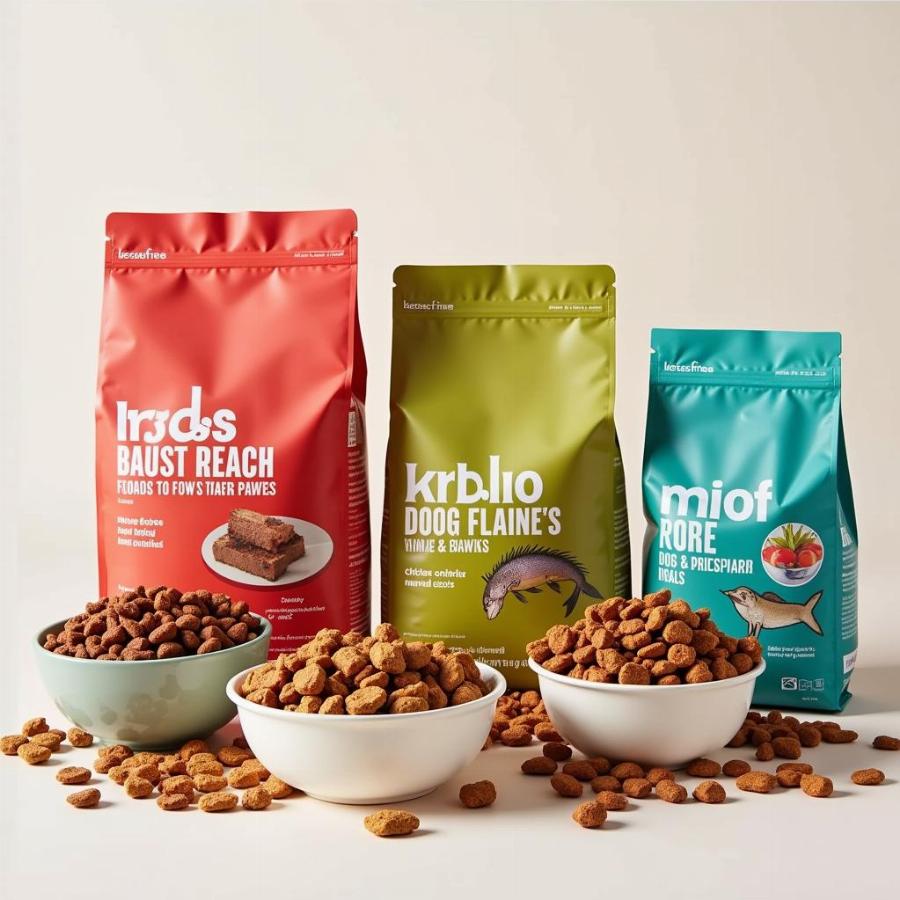Finding the right dry dog food can feel like navigating a maze, especially if your furry friend has dietary restrictions or allergies. If you’re searching for the best dry dog food without chicken, you’ve come to the right place. We’ll explore the reasons why chicken-free might be necessary, delve into important nutritional considerations, and offer some top-notch recommendations to help you make the best choice for your canine companion.
Why Choose Chicken-Free Dog Food?
Chicken is a common ingredient in many commercial dog foods due to its affordability and palatability. However, it’s also a frequent allergen for dogs. Symptoms of a chicken allergy can range from mild skin irritations and itchy paws to more serious gastrointestinal upset, including vomiting and diarrhea. If you notice these signs after introducing a chicken-based food, a chicken-free diet might be the solution. Beyond allergies, some pet parents simply prefer to avoid chicken for various reasons, opting for alternative protein sources they believe are healthier or more ethically sourced.
 Various Chicken-Free Dog Food Options
Various Chicken-Free Dog Food Options
Key Nutritional Considerations for Chicken-Free Diets
When choosing a chicken-free dry dog food, it’s crucial to focus on complete and balanced nutrition. Look for foods that meet the Association of American Feed Control Officials (AAFCO) standards for your dog’s age and life stage (puppy, adult, senior). Ensure the food has a high-quality protein source, such as beef, lamb, fish, or even novel proteins like kangaroo or insect-based protein. Healthy fats, like omega-3 and omega-6 fatty acids, are essential for skin and coat health, while carbohydrates provide energy. Avoid fillers like corn, wheat, and soy, which offer little nutritional value.
What Are Some Good Chicken-Free Dry Dog Food Brands?
With so many options on the market, finding the right chicken-free food can be daunting. Don’t worry, we’re here to help! Look for brands that prioritize quality ingredients and transparent labeling. Here are some examples to get you started:
- Brands focusing on novel proteins: These are excellent choices for dogs with severe food sensitivities. Look for options featuring kangaroo, venison, or insect-based protein.
- Brands specializing in limited ingredient diets: These foods contain fewer ingredients, making it easier to identify potential allergens. Look for options with a single protein source and easily digestible carbohydrates.
- Brands offering grain-free formulas: These can be beneficial for dogs with grain sensitivities. Ensure the food is still nutritionally complete and balanced with alternative carbohydrate sources like sweet potato or pumpkin.
How to Transition Your Dog to a New Chicken-Free Food
Switching your dog’s food should be a gradual process to avoid digestive upset. Start by mixing a small amount of the new chicken-free food with their current food. Slowly increase the proportion of the new food over 7-10 days until they are eating the new food exclusively. Monitor your dog closely for any signs of allergies or digestive issues during the transition.
What if My Dog Still Has Allergies on a Chicken-Free Diet?
While chicken is a common culprit, other ingredients can also trigger allergies. If your dog continues to experience symptoms on a chicken-free diet, consult your veterinarian. They can help identify the specific allergen through allergy testing and recommend a hypoallergenic or hydrolyzed protein diet.
Conclusion
Choosing the best chicken-free dry dog food requires careful consideration of your dog’s individual needs and potential sensitivities. Prioritize high-quality ingredients, balanced nutrition, and consult your veterinarian if you have any concerns. With a little research and patience, you can find the perfect chicken-free diet to keep your furry friend happy, healthy, and allergy-free!
FAQ:
-
What are some common signs of a chicken allergy in dogs? Common signs include itchy skin, excessive scratching or licking, ear infections, vomiting, and diarrhea.
-
Are grain-free diets always better for dogs with allergies? Not necessarily. While some dogs are allergic to grains, others thrive on them. Focus on finding a food with high-quality ingredients regardless of whether it’s grain-free or not.
-
Can I make homemade chicken-free dog food? While possible, it can be challenging to ensure nutritional balance. Consult a veterinary nutritionist for guidance if you choose this route.
-
How much chicken-free dry food should I feed my dog? Follow the feeding guidelines on the food packaging, but adjust the amount based on your dog’s age, activity level, and overall health. Your veterinarian can help determine the appropriate portion size for your dog.
-
What should I do if my dog refuses to eat the new chicken-free food? Try mixing it with a small amount of their favorite treats or wet food. You can also try warming the food slightly to enhance the aroma.
Looking for more information about dog nutrition and care? Check out these articles:
- Link to article about dog allergies
- Link to article about choosing the right dog food
- Link to article about novel protein diets for dogs
Beaut Dogs is your one-stop shop for all things related to caring for your beloved canine companion. We provide trustworthy and in-depth information about the fascinating world of dogs, including breed-specific guides, nutrition advice, and training tips. When you need expert guidance, reach out to us via Email at [email protected], and Beaut Dogs will provide detailed and accurate answers.